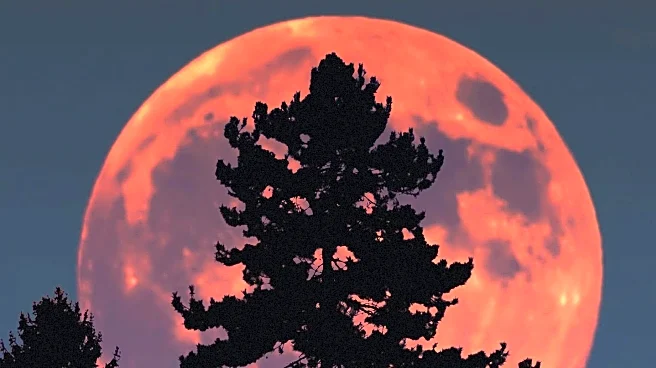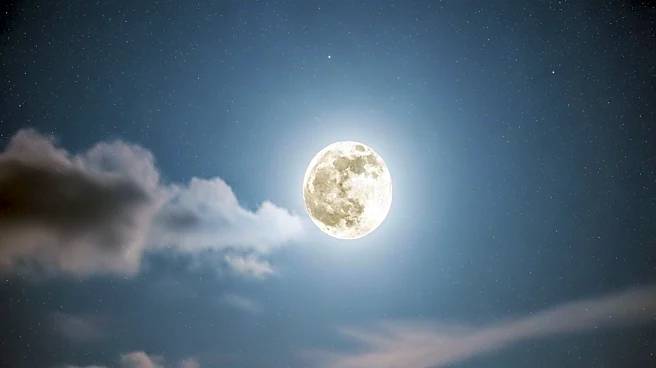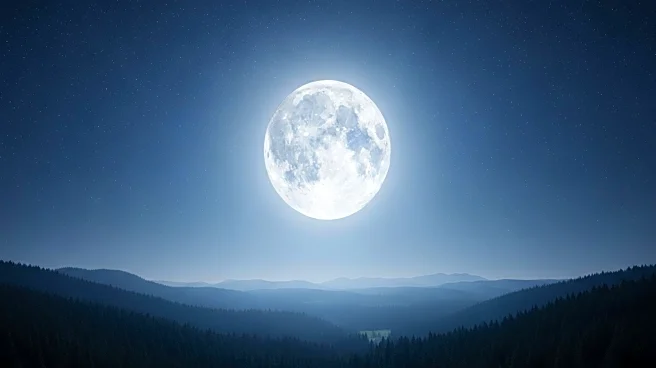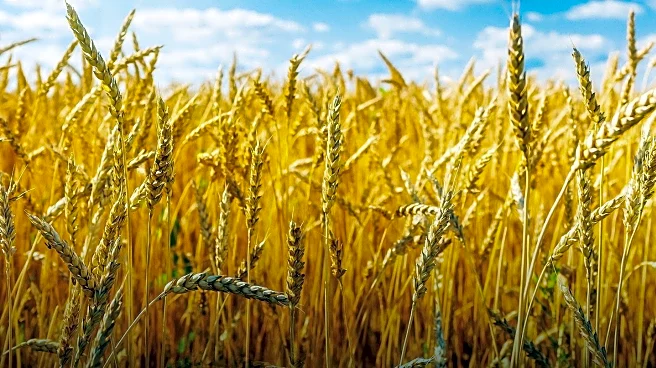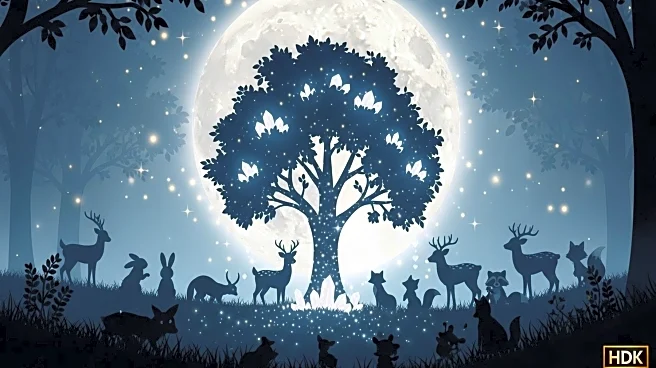What's Happening?
On October 6, 2025, the Harvest Moon, also known as the first supermoon of the year, illuminated the night sky. This supermoon occurs when the moon is within 90% of its closest approach to Earth, known as perigee. During this time, the moon is approximately 226,000 miles away, making it appear larger and brighter than usual. The Harvest Moon is traditionally the full moon closest to the autumn equinox, providing light for farmers to harvest crops. This year, the moon reached peak illumination at 11:47 p.m. ET, offering a spectacular view for skywatchers.
Why It's Important?
The Harvest Moon's occurrence as a supermoon is significant for both cultural and scientific reasons. Culturally, it marks the end of the harvest season, a time when farmers historically relied on the moon's light to complete their work. Scientifically, the supermoon provides an opportunity to study the moon's effects on Earth, including its impact on tides and natural phenomena. The event also highlights the moon's orbital dynamics and its influence on our planet, drawing interest from astronomers and enthusiasts alike.
What's Next?
The Harvest Moon is the first of four consecutive supermoons, with additional events expected in November, December, and January 2026. These upcoming supermoons will continue to offer opportunities for observation and photography. As the moon's proximity to Earth increases during these events, scientists and enthusiasts will have further chances to study its effects and capture stunning images. The anticipation for these celestial events is likely to grow among the astronomical community and the general public.
Beyond the Headlines
The supermoon phenomenon may lead to increased interest in lunar research and exploration. Discussions on the cultural significance of lunar events could also be sparked, exploring the moon's role in folklore and traditions across various cultures. Additionally, the supermoon may inspire new scientific inquiries into the moon's influence on Earth, potentially leading to advancements in our understanding of lunar dynamics.

